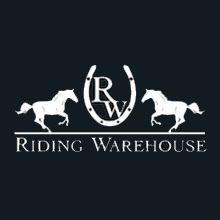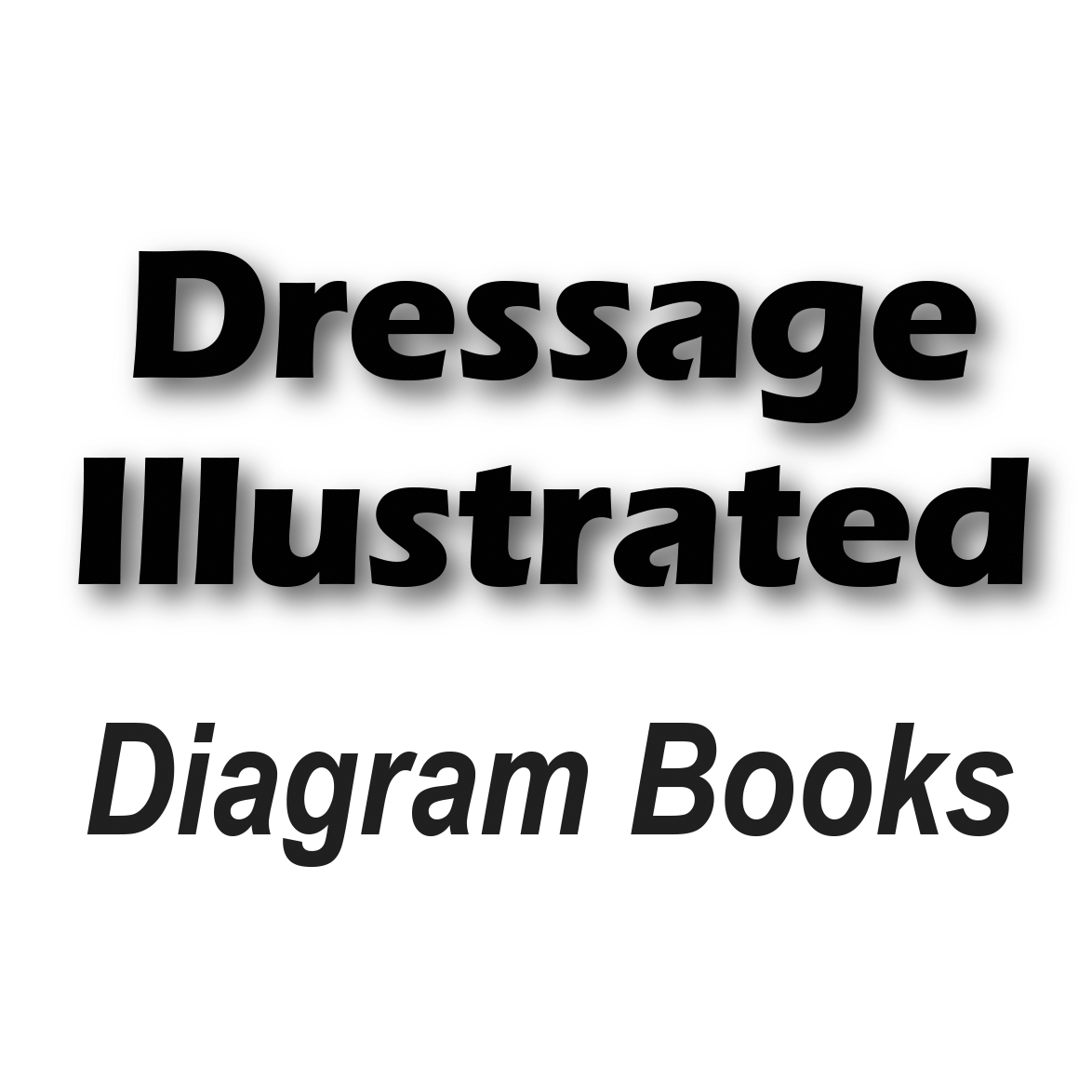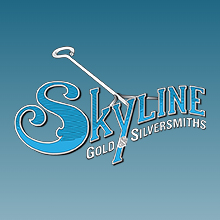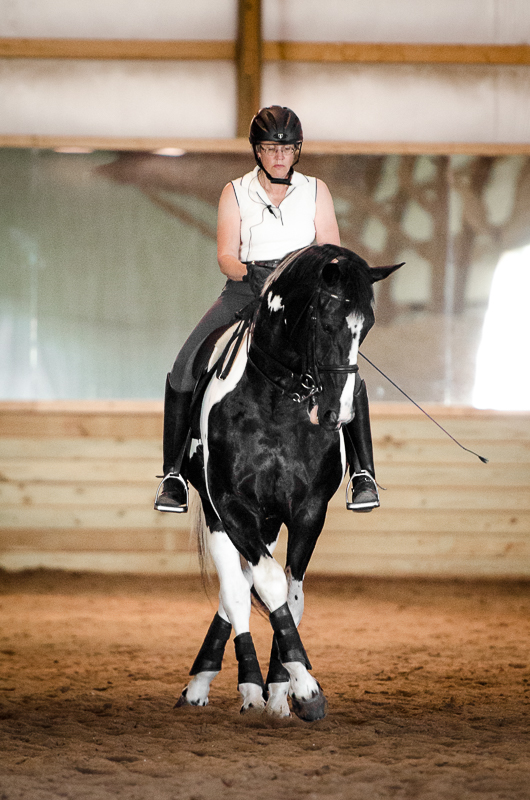 Western Dressage came along at a good time in my life and the life of my horse. I have a long and varied background in traditional dressage, and I have taken advantage of many educational opportunities through the US Dressage Federation and US Equestrian Federation over the years. I have also been an active participant in my local dressage club, Kansas Dressage and Eventing Association. As a result of my experiences and education, I'm an L-graduate (able to judge dressage schooling shows), as well as an “r” Technical Delegate for dressage shows (rules enforcement at dressage shows). I have also been a secretary or manager for both schooling and recognized dressage shows and horse trials, and I'm currently the President of Kansas Dressage and Eventing. With my current horse, I also competed through Fourth Level dressage, and I've been teaching dressage to local riders who bring all breeds of horses to their lessons.
Western Dressage came along at a good time in my life and the life of my horse. I have a long and varied background in traditional dressage, and I have taken advantage of many educational opportunities through the US Dressage Federation and US Equestrian Federation over the years. I have also been an active participant in my local dressage club, Kansas Dressage and Eventing Association. As a result of my experiences and education, I'm an L-graduate (able to judge dressage schooling shows), as well as an “r” Technical Delegate for dressage shows (rules enforcement at dressage shows). I have also been a secretary or manager for both schooling and recognized dressage shows and horse trials, and I'm currently the President of Kansas Dressage and Eventing. With my current horse, I also competed through Fourth Level dressage, and I've been teaching dressage to local riders who bring all breeds of horses to their lessons.
With my horse now aging, and not wanting to push him to express his gaits to the fullest extent at his age, I looked toward the relatively new discipline of Western Dressage. Maybe Western Dressage was a way I could continue to school my horse, with dressage principles, but still be taking on the demands of a different discipline that might be more challenging to me than to my horse.
And so began my journey in Western Dressage, the relatively new discipline governed by the Western Dressage Association of America (WDAA) and the US Equestrian Federation (USEF). The slogans of the WDAA are “Honor the Horse,” and “Enjoy the Journey.” Not that traditional dressage didn't honor the horse or provide an enjoyable journey, but WDAA was going out of its way to include breeds and riders of all backgrounds. WDAA welcomes ponies and horses of any (or no) breed, mules and gaited horses. That included my warmblood, who had to now learn to use his (and my) dressage skills to become a western dressage horse. What many people don't realize is that a Western dressage horse is NOT an English dressage horse in Western tack.
In 2016, when my horse was 19, I entered the USEF/WDAA Western Dressage judge's program, and a year and a half later earned my “R” Western Dressage license after numerous clinics, apprenticeships, and an extensive exam. I then began judging Western dressage shows, primarily in the Midwest where there are large numbers of Western horses. Although I had competed in traditional dressage for decades in local and regional shows, I, like others, had little experience with Western Dressage as a show discipline, as the sport was very new. With my judge colleagues, I continued to learn about the finer points of judging western dressage and the WDAA further refined its rules and expectations for the competitive western dressage horse. For those wanting to know more about Western dressage, anyone can audit the Judge continuing education clinic or the “Train the Trainer” seminar, taught by Frances Carbonnel and Cliff Swanson, that focuses more on teaching professional of various disciplines about western dressage.
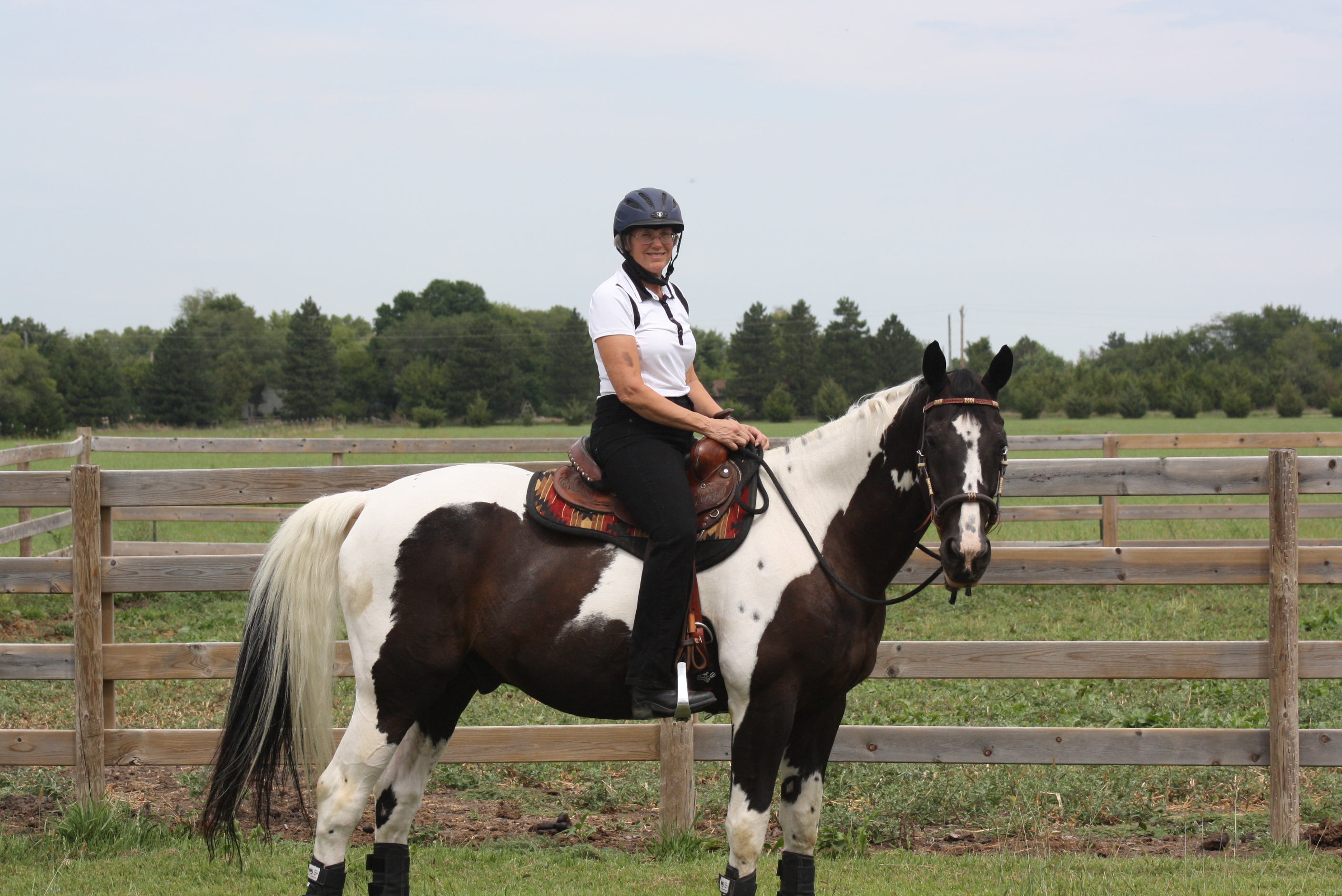
Western dressage offered another viewpoint and a different level of fitness was required of my “bouncy” but aging warmblood. I was still able to sit his “expressive gaits,” but found that he was more comfortable with a softer gait. I no longer asked him for the full extension of his gaits, but instead asked for a softer, almost more cadenced jog within his own measured balance. I was not destroying his “traditional dressage” gaits but brought him to a new way to show off his athleticism. This gave me a new dressage arena adventure and training regimen. I've now come through Intro, Basic and Level 1 with my horse, and am currently doing Level 2 and 3 work. Schooling and showing him in Western Dressage allowed me to gain a better perspective of the requirements of each level, and I can also appreciate, from a rider's point of view, the specific challenges presented in each test.
Since my original training for my Western dressage license, I have now attended several western dressage continuing education sessions, including a “Train the Trainer” seminar. I have been “out there” teaching western dressage as well as judging both “Lite” and recognized Western Dressage shows, making comments to riders that I hope they will find helpful in their western dressage joruney. No judge or clinician is perfect (after all, a 10 is excellent, not perfect), so some days I may second guess a score or two, just like a rider will wonder what would have happened if they had ridden deeper into the corner like their trainer always advises or if they had balanced the horse just a little more before the transition. The goal of a judge is to have a consistent methodolgy to give each individual score that reflects the requirements of the test movement, but also correctly places the horse in the class. But remember, that in a full day of judging 70 classes, the judge may give 1200 to 1500 individual scores, with the expectation that the end result being that the best horse wins – that is the best horse, in that class, on that given day.
Many people are familiar with dressage, but have little experience incorporating what they know about dressage to the schooling of their Western horse. Whether or not the show ring is your end goal, the Western Dressage Association, licensed judges and knowledgeable trainers can assist riders who want to know more about training your horse for Western Dressage. It is up to you to go out there and find the resources available to you, and to go watch shows and clinics around you. The door is open – you are invited in to find out more and above all “Enjoy the Journey.”
Author: Susan Lang


